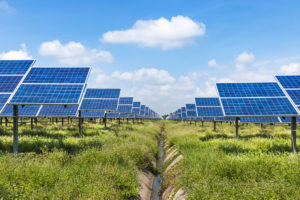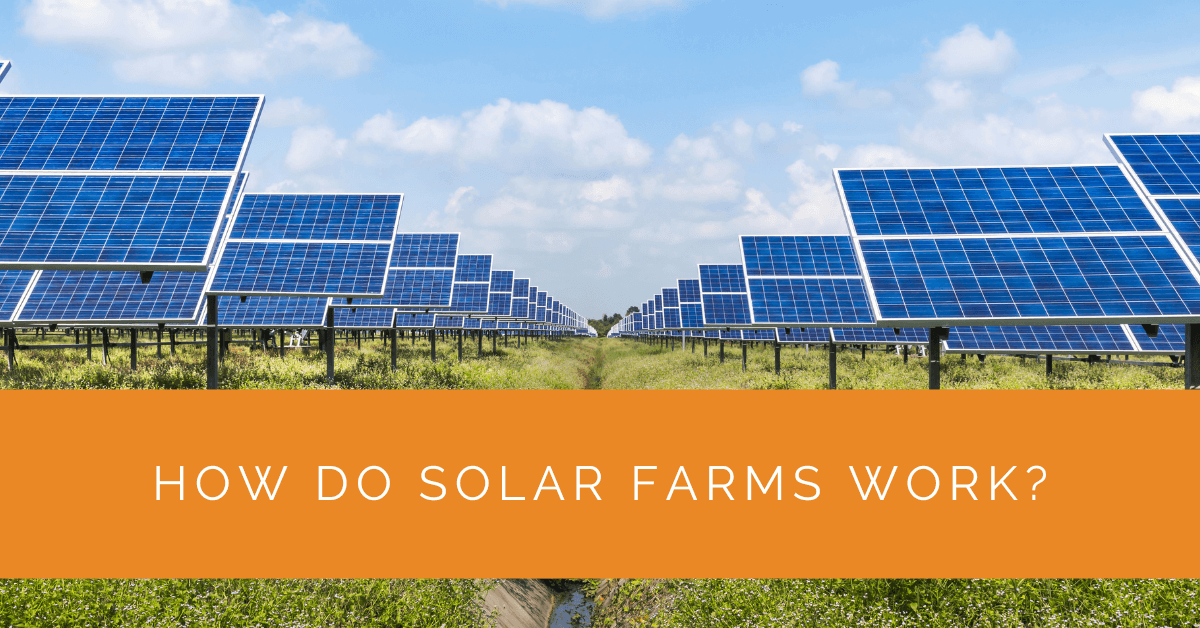Solar energy is gaining immense popularity as a sustainable and clean energy source. One of the key players in harnessing solar power on a large scale is the solar farm. In this article, we will explore the inner workings of solar farms, their components, functioning, advantages, and challenges. Join us on this enlightening journey into the world of solar farms.
Contents
Key Takeaways
- Solar farms, also known as utility-scale solar farms, are vast installations that use solar panels to generate electricity on a large scale, feeding it directly into the power grid.
- The components of a solar farm include solar panels, inverters, mounting structures, and tracking systems, all working together to capture sunlight and convert it into usable electricity.
- Advantages of solar farms include renewable and clean energy production, reduction in greenhouse gas emissions, job creation, and energy portfolio diversification. In contrast, challenges include initial high setup costs, dependence on sunlight, land requirements, and environmental considerations.
Understanding Solar Farms
What are Solar Farms?
Solar farms, also known as solar parks or utility-scale solar farms, are vast installations that utilize solar panels to generate electricity. These farms consist of multiple solar panels arranged in arrays to capture sunlight efficiently. Unlike rooftop solar systems, solar farms are designed to generate electricity on a larger scale, feeding it directly into the power grid.
Components of a Solar Farm
Solar farms have several essential components that combine to convert sunlight into usable electricity. These include:
- Solar Panels: These are the building blocks of solar farms. They comprise individual solar cells that absorb sunlight and convert it into direct current (DC) electricity.
- Inverters: Once the solar panels capture sunlight and generate DC electricity, inverters come into play. They convert DC power into alternating current (AC), compatible with the power grid.
- Mounting Structures: Solar panels are mounted on sturdy structures designed to optimize their exposure to sunlight. These structures ensure that the panels are angled correctly for maximum energy absorption.
- Tracking Systems: Some solar farms employ tracking systems that allow the solar panels to move and track the sun’s path throughout the day. This movement enhances energy production by maintaining optimal alignment with the sun.
Siting and Designing Solar Farms
The location and design of a solar farm play crucial roles in its overall performance. When setting up a solar farm, factors such as sunlight availability, available land, accessibility, and proximity to the power grid are considered. Detailed feasibility studies and obtaining the necessary permits are essential for successful solar farm projects.
Working with Solar Farms
Capturing Sunlight
The fundamental principle behind solar farms is the photovoltaic effect. When sunlight falls on the solar panels, the solar cells within the panels absorb the photons present in sunlight. These photons excite electrons within the semiconductor material of the solar cells, generating an electrical current.
Power Generation and Conversion
The inverters act once the solar panels have captured sunlight and generated DC electricity. They convert the DC electricity into AC electricity, which matches the voltage and frequency of the power grid. This AC electricity can then be seamlessly integrated into the existing power infrastructure, supplying electricity to homes, businesses, and industries.
Monitoring and Maintenance
To ensure optimal performance, solar farms require regular monitoring and maintenance. Monitoring systems track the solar farm’s output, helping identify any issues affecting its efficiency. Routine inspections and cleaning are performed to keep the solar panels clear of dust, debris, or any other factors that could obstruct sunlight absorption.

Advantages and Challenges of Solar Farms
Advantages
Solar farms offer numerous advantages in the pursuit of clean energy:
- Renewable and Clean Energy Source: Solar farms harness the abundant and renewable energy of the sun, generating electricity without producing harmful greenhouse gas emissions.
- Reduction in Greenhouse Gas Emissions: By displacing fossil fuel-based power generation, solar farms significantly reduce greenhouse gas emissions, mitigating the impacts of climate change.
- Job Creation and Economic Benefits: The development and operation of solar farms create employment opportunities and stimulate local economies.
- Diversification of Energy Portfolio: Solar farms diversify the energy mix, reducing dependence on traditional power sources and enhancing energy security.
Challenges
While solar farms offer substantial benefits, they also present some challenges:
- Initial High Setup Costs: Establishing a solar farm requires a significant upfront investment in solar panels, inverters, mounting structures, and other equipment. However, solar technology’s cost has decreased over the years, making solar farms more financially viable.
- Intermittency and Dependence on Sunlight: Solar farms depend on sunlight for electricity generation. Cloudy days and nighttime affect their productivity. However, advancements in energy storage technologies and grid integration strategies address the intermittency issue, ensuring a more reliable power supply.
- Land and Space Requirements: Solar farms require considerable land to accommodate the solar panels and associated infrastructure. Balancing the need for land with environmental considerations, agricultural use, and other land use requirements can pose challenges in finding suitable sites.
- Environmental Considerations and Land Use Impacts: Developing solar farms may have some environmental impacts, such as land disturbance, habitat fragmentation, and impacts on local ecosystems. Proper site selection, environmental assessments, and implementation of mitigation measures can help minimize these effects.
Expert Insights From Our Solar Panel Installers About Solar Farms
Solar farms are pivotal in our transition to renewable energy. They harness the sun’s power on a large scale, making a significant impact on reducing greenhouse gas emissions and promoting sustainability.
Senior Solar Installer
The efficiency and reliability of solar farms depend on several factors, including the quality of the panels, the design of the installation, and regular maintenance. Properly managed, they offer a steady and substantial energy output.
Lead Solar Technician
One of the key benefits of solar farms is their ability to create jobs and stimulate local economies. From the initial installation to ongoing maintenance, these projects offer numerous employment opportunities.
Solar Installation Manager
Case Study: Maximizing Efficiency with Solar Farms
Background
Solar Panels Network USA prides itself on delivering top-notch solar energy solutions, including the development and management of solar farms. Recently, we undertook a project to establish a large-scale solar farm in a rural area with ample sunlight and available land.
Project Overview
The project’s primary goal was to generate renewable energy to supply the local power grid, reduce carbon emissions, and promote sustainable energy use in the region. The selected site offered optimal conditions for a solar farm, including high solar irradiance and proximity to the power grid.
Implementation
Our team began with a comprehensive feasibility study, assessing sunlight availability, land suitability, and grid connectivity. We collaborated with local authorities to obtain the necessary permits and ensure compliance with environmental regulations.
The solar farm installation involved several key components:
- Solar Panels: High-efficiency monocrystalline panels were chosen for their superior energy conversion rates.
- Inverters: Advanced inverters were installed to convert DC electricity from the panels to AC electricity for grid integration.
- Mounting Structures: Robust mounting structures were designed to withstand local weather conditions and optimize panel orientation.
- Tracking Systems: Dual-axis tracking systems were employed to maximize sunlight capture throughout the day.
Results
The solar farm became operational ahead of schedule, thanks to meticulous planning and efficient execution. The farm’s energy output exceeded initial projections, supplying clean energy to over 5,000 homes in the area. The project also created over 100 jobs during the installation phase and several permanent positions for ongoing maintenance and monitoring.
Summary
Our experience with this solar farm project underscores the significant benefits and potential of large-scale solar energy installations. By harnessing the sun’s power, we provided a reliable and sustainable energy source, stimulated local economic growth, and contributed to environmental conservation. Solar Panels Network USA remains committed to advancing renewable energy solutions and supporting communities in their transition to clean energy.
Experience Solar Excellence with Us!
Trust in Solar Panels Network USA, where our seasoned experts deliver top-quality solar solutions for homes and businesses nationwide. With a legacy of countless successful installations and a commitment to sustainable energy, we’re your reliable partner in the solar journey. Ready for a brighter, eco-friendly future? Call us now at (855) 427-0058 and harness the sun’s power!
Conclusion
Solar farms play a pivotal role in the transition to clean energy by harnessing the sun’s power on a large scale. Understanding their components, functioning, advantages, and challenges is vital in appreciating their significance. As renewable energy continues to gain momentum, solar farms will continue to be at the forefront of generating sustainable electricity and reducing our carbon footprint. By embracing solar farms and investing in clean energy projects, we can pave the way for a greener and more sustainable future.
Solar farms are just one aspect of the broader solar power industry. From rooftop solar systems to large-scale solar power plants, solar energy offers diverse opportunities for individuals, communities, and businesses to generate electricity and contribute to a cleaner and more sustainable world.
FAQ
How do solar farms make a profit?
Solar farms generate revenue by selling electricity to utility companies or other consumers. These farms often enter into power purchase agreements (PPAs) or receive incentives such as feed-in tariffs, guaranteeing a fixed payment for the electricity they generate. Additionally, solar farms may benefit from tax incentives and renewable energy credits, further enhancing their profitability.
How do solar farms connect to the grid?
Solar farms connect to the grid through a series of electrical components. Inverters convert the farm’s electricity generated by solar panels from DC to AC power. AC power is then fed into transformers, which increase the voltage to match the grid’s requirements. Finally, the power is injected into the grid through a connection point, enabling it to be distributed and used by consumers.
How do solar farms work at night?
Solar farms do not generate electricity during nighttime when sunlight is unavailable. However, solar farms can still provide power during this period by utilizing energy storage systems, such as batteries. Excess electricity generated during the day can be stored in these batteries and discharged at night, ensuring a continuous power supply to the grid.
How many acres should a solar farm be?
The required land area for a solar farm depends on various factors, including the desired capacity, solar panel efficiency, and the amount of sunlight available in the region. On average, a utility-scale solar farm may range from a few to hundreds of acres, accommodating thousands of solar panels. However, it’s important to note that land requirements can vary significantly based on project-specific parameters and local regulations.
Is owning a solar farm profitable?
Owning a solar farm can be profitable, but several factors influence its profitability. These include the cost of equipment, installation, and maintenance, the electricity pricing structure in the region, available incentives and tax benefits, and the overall efficiency of the solar farm. Conducting a thorough financial analysis and considering long-term factors such as market trends and energy demand is crucial in determining the profitability of owning a solar farm.
Remember, the profitability of a solar farm can vary based on location, market conditions, and specific project considerations. It’s advisable to consult with experts and conduct a detailed feasibility study before venturing into solar farm ownership.
About the Author
Solar Panels Network USA stands at the forefront of solar energy solutions, driven by a team of seasoned solar engineers and energy consultants. With over decades of experience in delivering high-quality solar installations and maintenance, we are committed to promoting sustainable energy through customer-centric, tailored solutions. Our articles reflect this commitment, crafted collaboratively by experts to provide accurate, up-to-date insights into solar technology, ensuring our readers are well-informed and empowered in their solar energy decisions.

